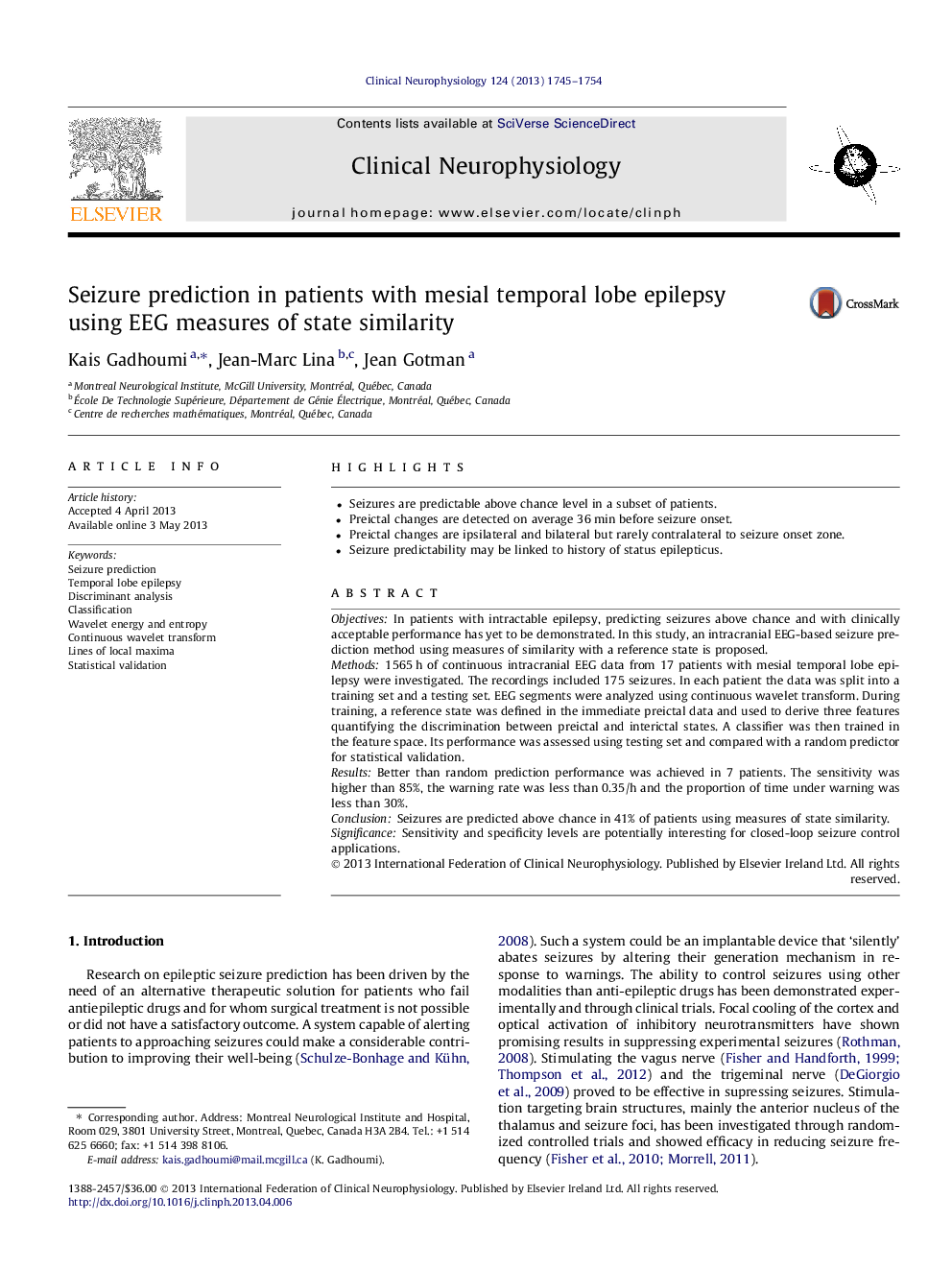| Article ID | Journal | Published Year | Pages | File Type |
|---|---|---|---|---|
| 6008973 | Clinical Neurophysiology | 2013 | 10 Pages |
â¢Seizures are predictable above chance level in a subset of patients.â¢Preictal changes are detected on average 36 min before seizure onset.â¢Preictal changes are ipsilateral and bilateral but rarely contralateral to seizure onset zone.â¢Seizure predictability may be linked to history of status epilepticus.
ObjectivesIn patients with intractable epilepsy, predicting seizures above chance and with clinically acceptable performance has yet to be demonstrated. In this study, an intracranial EEG-based seizure prediction method using measures of similarity with a reference state is proposed.Methods1565Â h of continuous intracranial EEG data from 17 patients with mesial temporal lobe epilepsy were investigated. The recordings included 175 seizures. In each patient the data was split into a training set and a testing set. EEG segments were analyzed using continuous wavelet transform. During training, a reference state was defined in the immediate preictal data and used to derive three features quantifying the discrimination between preictal and interictal states. A classifier was then trained in the feature space. Its performance was assessed using testing set and compared with a random predictor for statistical validation.ResultsBetter than random prediction performance was achieved in 7 patients. The sensitivity was higher than 85%, the warning rate was less than 0.35/h and the proportion of time under warning was less than 30%.ConclusionSeizures are predicted above chance in 41% of patients using measures of state similarity.SignificanceSensitivity and specificity levels are potentially interesting for closed-loop seizure control applications.
